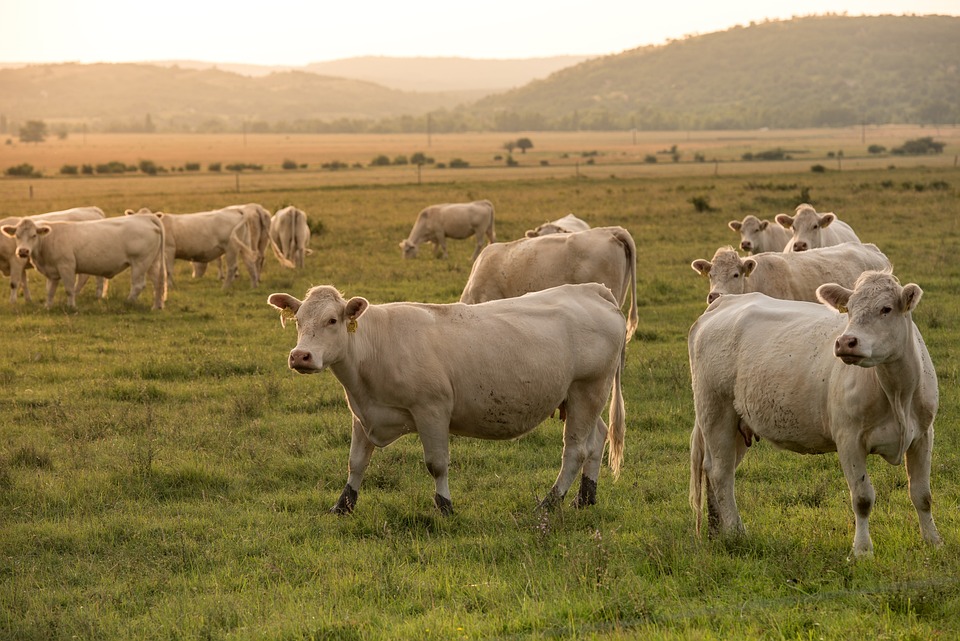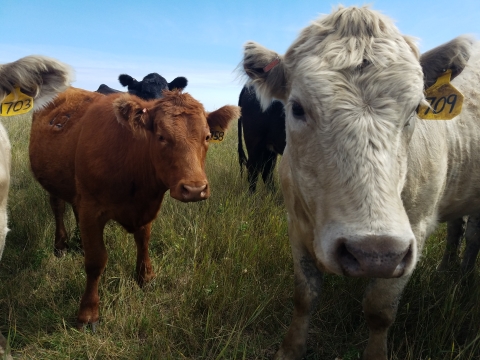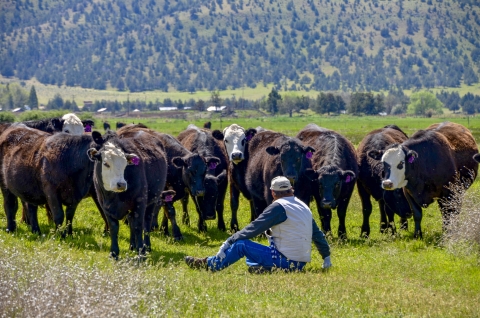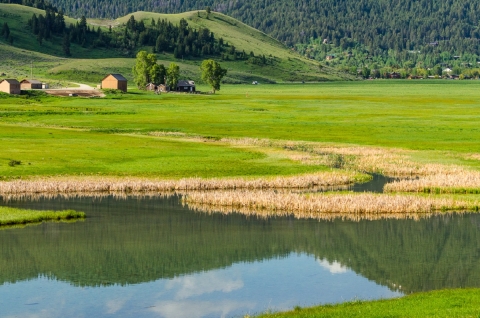Produced by the U.S. Fish & Wildlife Service, this article is an objective overview of the benefits of ranching to land, water and wildlife, and its role in conservation. It is no secret that ranchers and farmers are the first and best stewards of the land, in large part because their productivity and success depend on nuturing healthy ecosystems. We appreciate the efforts of any and all parties willing to showcase the work of ranchers who devote their lives to being good stewards of the land. ~Ed.
Stewards of the Land: Ranchers on the Front Lines of Conservation
Every morning, ranchers across the country are up and moving before most of us have even had our morning coffee. To them, it’s more than a job. It’s a promise to protect and care for the land, a promise often passed down from generation to generation. Being stewards of our lands is challenging yet vitally important, and their efforts play a critical role in supporting our communities, economy, and the environment.
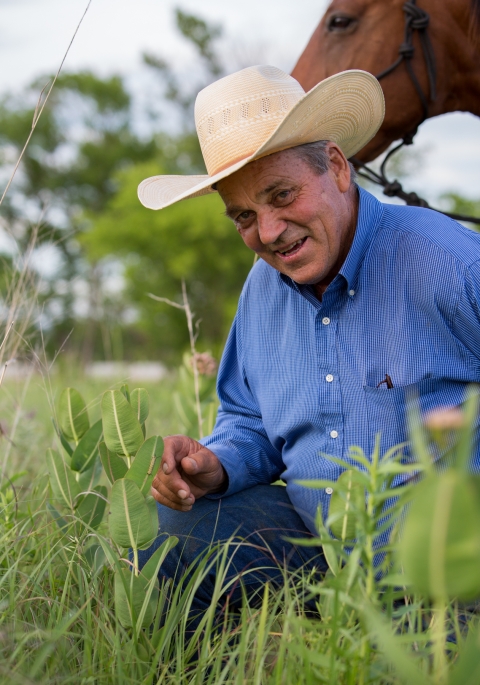
“When you view land as a community and you’re part of that community, that’s when you can start to really love and cherish the land. And I want to be part of the community. I want to be part of this web of life that’s going on out there. I don’t want to conquer the land. I want to be part of the land.” Bill Sproul, Kansas Rancher
When considering the day-to-day life of living on the land, most of us probably picture idyllic images often seen in movies, a simple life, but the reality is there is a lot more to ranching. It requires big-picture vision and attention to what most would consider even the smallest detail: grass.
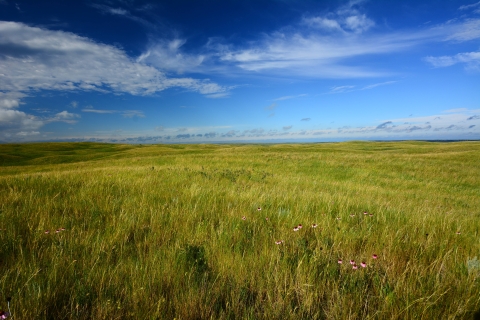
Grasslands are one of the world’s most critical ecosystems, providing habitat for resident and migrant birds and mammals, protecting against drought, flooding, and wildfire, as well as reducing the amount of carbon dioxide in the atmosphere. While forests and oceans command the world’s attention for their capacity to reduce carbon, grasslands are the unsung champions of carbon reduction. The root system of native grasses is surprisingly deep, some reaching as far as 6 feet in depth. This allows for the storage of carbon deep underground, which is one way we can reduce the amount of carbon dioxide in the atmosphere.
Underneath these ecosystems, critical natural processes are taking place without fanfare or recognition, all under the careful watch of dedicated conservation stewards: ranchers.
“If you want to have an open, healthy prairie, one of the best stewards of the prairie is the rancher, because the rancher wants open space grassland. I hope that people start to understand what the prairie is and how important this plant community is to air quality, to water quality, to wildlife, to humans, everything. There’s not very much prairie left. It’s important we keep some of it around and then we try to do the best we can with it. That’s what gets me up every morning and keeps me going right now, is working with the land.” Bill Sproul
Grazing Helps Grass Grow
Negative perceptions about grazing practices often focus on the risks of over-grazing, which can strip the land of nutrients needed to support grass growth. However, as with most things, nature needs balance, and good grazing practices increase ecosystem resilience and soil health. Win-win!
For thousands of years, herds of bison, elk, deer, and pronghorn roamed the lands that now stretch from Alberta, Canada, to Texas, as far east as Illinois, and as far west as California and Oregon. These herds enjoyed miles upon miles of pristine grasslands with “hardly a bush to disrupt the vast prairie”, according to nineteenth-century pioneer and sheepman George Kendall. Now, we are still learning just how important those animals were for keeping the prairies healthy.
Those herds have since disappeared and, today, we need to use a more hands-on approach to land management. When grasslands are not managed, they can start to decay and the grass loses its nutritional value. This reduces its value for both cattle and grassland-dependent wildlife. As the grass gets tall and falls over in autumn, it creates a layer of dead grass the next spring called thatch. This becomes an impenetrable wall that new grass can’t get past — but heartier plants, such as invasive grasses and woody species like weeds, trees, and shrubs, can. As the thatch becomes more and more dense, less water gets into to the soil, leading to increased runoff and degradation of soil health, making it even harder for grass to grow.
Over time, the grassland is overtaken by woody species, many of which are invasive, and the native grasses are pushed out of the ecosystem. This invasion completely transforms the ecosystem and eliminates critical habitat for native plants, animals, and invertebrates.
Conserving grasslands is crucial for the conservation of many imperiled species. As we’ve come to understand the importance of grasslands, conservation agencies and partners have committed to removing trees and invasive plants to restore our native prairies.

While machines can help keep grassland ecosystems healthy, one of the most economical ways to manage grass is by returning to nature: with animals. As grazing animals move over the land, their hooves leave divots in the ground where seeds and water can fall. The herd then packs down those seeds and water, and the animals’ waste fertilizes them, eventually giving rise to the next generation of grass. This is known as “hoof action.”
Hoof action plays other roles in managing grasslands, too. The divots left by hooves turn into tiny pools supporting invertebrates, tadpoles, and all sorts of organisms. Many of them play a larger role in other ecological chains.
For example, the U.S. Fish and Wildlife Service discovered that grazing practices helped sustain an endangered species. When the Wyoming toad was discovered in Laramie, Wyoming, biologists found that the tadpoles had been living in the small pools left behind by cattle. When the cattle were removed from the land, biologists observed several effects, including the loss of this key habitat for tadpoles.
Chytrid fungus thrives when plants become so overgrown that sunlight cannot break through, creating a dark, moist environment perfect for this disease to spread. In the absence of land management practices that control this overgrowth, the fungus spreads unchecked, and infected animals struggle to find the most effective cure: sunlight.
As biologists learned more about the relationship between grazing and the recovery of this endangered species, it became more apparent that, without the herds on the plains of Laramie, the toads might have gone extinct before anyone realized they were there. Now, biologists use sustainable grazing practices to help conserve and restore this species.
When grazing animals roam over a landscape, their hooves stamp down and weaken less-desirable plants, usually weeds, giving more desirable, native plants the chance to grow. This then causes a chain effect of benefits: As plant biodiversity improves, so too does the diversity of pollinators, which then attracts a broader range of wildlife and migratory birds. In a healthy ecosystem, a diversity of plants, animals, and insects ensures the natural cycles that maintain the ecosystem.
Without hoof action, grasslands decline and thus do the diversity of plants, animals, and insects that migratory birds rely on. Migratory birds, and a variety of other grassland-dependent wildlife, have declined dramatically since 1970. In that time, grassland birds have lost 53% of their populations in North America, a loss of over 700 million birds.
As the saying goes: What’s Good for the Herd is Good for the Bird!
“The prairie pothole region is known to produce the majority of the migratory waterfowl in the nation. The first thing we need to acknowledge is that over 90% of South Dakota is privately owned, so we are not going to reach our conservation goals, particularly for migratory waterfowl in the state, unless we find these win-win solutions with landowners.” — Kurt Forman, Coordinator of the Service’s South Dakota Partners for Fish and Wildlife
Sustainable Ranching for the Future
The majority of grasslands in the United States are privately owned. A large portion of that land is used for agriculture, which means the care and conservation of these key ecosystems is up to individual landowners, the stewards of the land.
As economies and populations continue to grow, so too does our global consumption of animal-based foods. Science continues to point to emissions produced from agriculture, specifically livestock production, as a major factor to consider when responding to climate change .
However, as with most things in life, no single solution addresses the many challenges we face in conservation. While livestock production is a contributor to global emissions, it is important to remember that there are different approaches to raising livestock and sustainable grazing practices are essential to conserving our grasslands and the fish and wildlife species that depend on them. In fact, the industry has shifted to the term “regenerative grazing” to incorporate the practices of building, rebuilding, or restoring degraded grasslands, alongside sustainable practices such as rotating herds and crops, planting diverse crops, using no-till agriculture, and keeping the lands covered during off-seasons. Together, these techniques promote soil health by restoring and maintaining carbon.
Ranchers understand the importance of healthy grasslands. Good stewardship practices are key to maintaining a profitable operation important for financial security as well as benefitting wildlife. Healthy grasslands provide many more benefits, too, including increased resistance to wildfire, drought, flooding, invasive species , and disease. They also perform a major role in the natural carbon cycle.
Key partnerships within the conservation community — like Working Lands for Wildlife (WLFW) — work directly with ranchers and landowners to maximize both these environmental outcomes and the benefits to the hard-working families that steward these lands and the wildlife that depend on them.
“WLFW bridges wildlife conservation with the people who are supported by these landscapes, focusing on voluntary, locally-led conservation that produces win-win solutions that keep working lands in working hands while benefitting wildlife. Conserving grasslands at scale requires an all-hands-on-deck approach. Combining landowner ‘know how’ with new spatial technology helps ensure the right practices hit the ground in the right places to keep rangelands productive, intact, resilient and healthy.” — Tim Griffiths, Western Working Lands for Wildlife coordinator with the USDA’s Natural Resources Conservation Service (NRCS)
Storing carbon in the rich soils of grasslands and shrublands plays a significant role in sequestering carbon emissions from fossil fuels. Despite occupying only 37% of the Central Grasslands, grasslands, shrublands, and wetlands contain as much as 50% of the region’s carbon stock. However, in addition to being considered one of the world’s most critical ecosystems, grasslands are also one of the most altered and imperiled ecosystems on the planet. All over the world, native grasslands have been replaced with vast stretches of crops, urban development, and invasive species.
According to the JV8 Central Grasslands Conservation Initiative, an average of 2 million acres of grassland are lost each year. “Recent estimates of agricultural conversion and grassland protection in the Northern Great Plains suggest grassland loss is occurring five times faster than grasslands can be protected.” This has led to a decline in the amount of carbon stored inside the soil.
“Grandpa was out here farming the land and they drained the wetlands because that’s what they did back then to get more acreage and more production. Forty years later, we’re restoring the wetlands, for the wildlife, and that’s what we enjoy, and what we feel strongly about. Have the grass for the wildlife and cattle.” -Chad Kunz, North Dakota Landowner
Increasing regenerative ranching on grasslands contributes to the restoration of important ecological processes which, in turn, has the potential to allow for even more carbon capture and storage. If you think that’s impressive, think about regenerative ranching combined with the immediate benefits of increased productivity and protection against drought, flooding, wildfire, and disease. While forests store carbon above-ground and are highly susceptible to wildfires, grasslands are better-protected from wildfires by storing carbon deep in the soil.
The National Cattlemen’s Beef Association has also made commitments to a sustainable future, aiming for carbon neutrality by 2040. “Cattle producers in the United States play a vital role in mitigating climate-related risks. And in the face of growing concerns related to climate change, the cattle industry commits to showing that we are part of the solution. The cattle industry is committed to leading the charge to ensure that farmers and ranchers have the most up-to-date research and technologies related to carbon sequestration and emissions reduction.”
Ranchers take great pride in their land and want to leave the land in better shape than they received it, ensuring the ranch is sustainable for future generations. In many cases, efforts to restore or conserve these ecosystems have cascading benefits such as cleaner water, improved resilience to wildfire, flooding and storms, and protected ecosystems for wildlife and people.
See the full post on the US Fish & Wildlife Service website by clicking here
Subscribe to RANGE magazine
Call 1-800-RANGE-4-U
You may also like
-
Tribute: Utah’s Green Dissident has passed on
-
Ecologist goes undercover to expose eagle deaths cause by wind turbines
-
Foot deformities in Texas foals caused by effects of nearby wind turbines
-
Groups sue Biden Administration to protect Right Whales from offshore wind project
-
Omnibus bill provision would “unleash” electronic tracking on nation’s cattle

